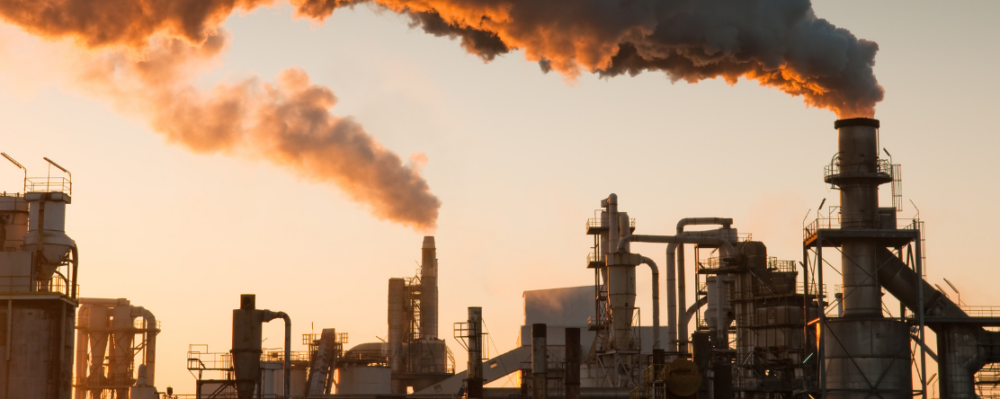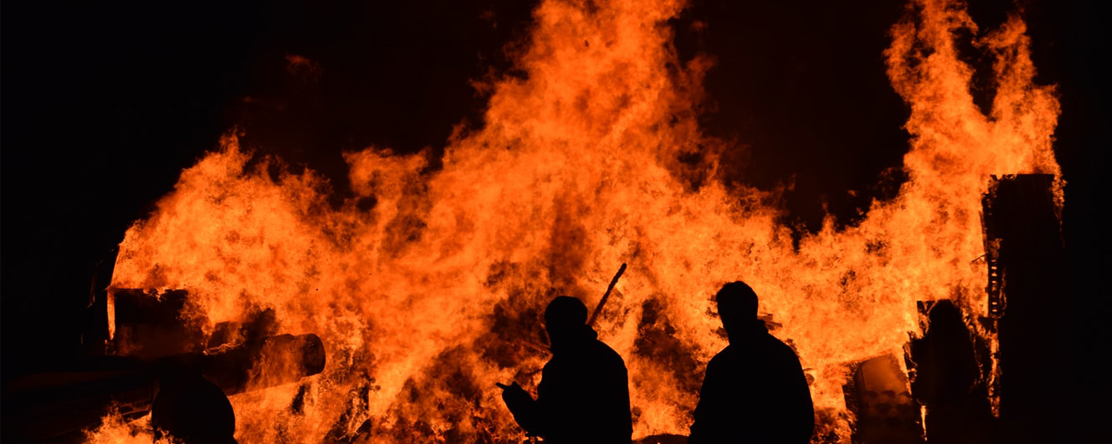
6 Ways Climate Change Harms Health in California
- Jennifer Scroggins, Lily Swartz, Ann Whidden
-
Focus Areas
Environmental Health, Healthy Communities -
Issues
Climate Change -
Programs
Center for Climate Change and Health

Our health and climate are inextricably linked. From polluted air quality to shrinking food and waters supplies, communities across California—and around the world—are already experiencing climate change’s harmful health impacts. The looming effects upon California’s communities, particularly those that are disproportionately vulnerable, are becoming increasingly urgent and severe.
In a new infographic created by the Public Health Institute and our Center for Climate Change and Health, learn how climate change is already contributing to California’s rising rates of disease, poverty, and death—and find out how you can take action now
On Twitter? Help spread the word:
- By 2100, wildfires may burn up to 74% more land in CA. See @phidotorg infographic: How #ClimateChange hurts CA health http://bit.ly/CA-Climate-Health
- #ClimateChange hurts CA’s health: CA will average 53 extreme heat days/yr by 2050. Historical is 4/yr. http://bit.ly/CA-Climate-Health @phidotorg
- #ClimateChange hurts CA’s health: In 2015, 500,000 acres of farmland lay fallow due to drought. http://bit.ly/CA-Climate-Health @phidotorg

|
Download a print-friendly version of the infographic.
Infographic References
Poor Air Quality
Caiazzo F., Ashok A., Waitz I., Yim S. & Barrett S. (2013). Air pollution and early deaths in the United States. Part I: Quantifying the impact of major sectors in 2005. Atmospheric Environment, 79, 198-208. doi: 10.1016/j.atmosenv.2013.05.081.
California Highway Patrol. (2013). Statewide Integrated Traffic Records System (SWITRS) 2013 Report. Retrieved from https://www.chp.ca.gov/programs-services/services-information/switrs-internet-statewide-integrated-traffic-records-system/switrs-2013-report
American Lung Association. (2016). State of the Air 2016. Chicago, IL. Retrieved from http://www.lung.org/assets/documents/healthy-air/state-of-the-air/sota-2016-full.pdf
Program for Environmental and Regional Equity, USC Dornsife. (2009). The Climate Gap: Inequalities in How Climate Change Hurts Americans & How to Close the Gap. Los Angeles, CA: Morello-Frosch, R., Pastor M., & Sadd, J., Shonkoff, S. Retrieved from https://dornsife.usc.edu/pere/climategap/
The White House. (2014). The Health Impacts of Climate Change on Americans. Washington, DC. Retrieved from https://www.whitehouse.gov/sites/default/files/docs/the_health_impacts_of_climate_change_on_americans_final.pdf
Heat-Related Illness & Death
National Weather Service. (2015). Weather Fatalities. Retrieved from http://www.nws.noaa.gov/os/hazstats/resources/weather_fatalities.pdf
Hoshiko S., English P., Smith D., Trent R. (2010). A simple method for estimating excess mortality due to heat waves, as applied to the 2006 California heat wave. International Journal of Public Health, 55(2):133-7. doi: 10.1007/s00038-009-0060-8.
Knowlton K., Rotkin-Ellman M., King G., Margolis H. G., Smith D., Solomon G., … English, P. (2009). The 2006 California Heat Wave: Impacts on Hospitalizations and Emergency Department Visits. Environmental Health Perspectives, 117(1), 61–67. http://doi.org/10.1289/ehp.11594
California EPA. (2013). Preparing California for extreme heat, guidance and recommendations. Sacramento, CA: California Environmental Protection Agency. Retrieved from http://www.climatechange.ca.gov/climate_action_team/reports/Preparing_California_for_Extreme_Heat.pdf
Program for Environmental and Regional Equity, USC Dornsife. (2009). The Climate Gap: Inequalities in How Climate Change Hurts Americans & How to Close the Gap. Los Angeles, CA: Morello-Frosch, R., Pastor M., & Sadd, J., Shonkoff, S. Retrieved from https://dornsife.usc.edu/pere/climategap/
Morello-Frosch R. & B. Jesdale. (2008). Unpublished impervious surface and tree cover data. Data for this analysis was derived from: U.S. Geological Survey’s National Land Cover Dataset 2001. www.mrlc.gov/nlcd.php, accessed on June 20, 2007; and ESRI’s ArcMap census boundary files www.census.gov/ geo/www/cob/bdy_files.html, accessed June 6, 2008.
Jesdale B., Morello-Frosch R., & Cushing L. (2013). The Racial/Ethnic Distribution of Heat Risk–Related Land Cover in Relation to Residential Segregation. Environmental Health Perspectives, 121:811-817. http://dx.doi.org/10.1289/ehp.1205919
English P., K. Fitzsimmons, S. Hoshiko, T. Kim, H. G. Margolis, T. E., McKone, M. Rotkin-Ellman, G. Solomon, R. Trent & Z. Ross. (2007). Public health impacts of climate change in California: Community vulnerability assessments and adaptation strategies. Richmond, California: Climate Change Public Health Impacts Assessment and Response Collaborative, California Department of Public Health and Public Health Institute. Retrieved from http://www.cehtp.org/file/ca_heat_vulnerability_lowres_pdf
Program for Environmental and Regional Equity, USC Dornsife. (2009). The Climate Gap: Inequalities in How Climate Change Hurts Americans & How to Close the Gap. Los Angeles, CA: Morello-Frosch, R., Pastor M., & Sadd, J., Shonkoff, S. Retrieved from https://dornsife.usc.edu/pere/climategap/
Vector-Borne Diseases
Harrigan R. J., H. A. Thomassen, W. Buermann & T. B. Smith. (2014). A continental risk assessment of West Nile virus under climate change. Global Change Biology, 20, 2417–2425, doi:10.1111/gcb.12534.
Gillis J. (Feb 20, 2016). In Zika epidemic, a warning on climate change. The New York Times. Retrieved from http://www.nytimes.com/2016/02/21/world/americas/in-zika-epidemic-a-warning-on-climate-change.html
United States Department of Labor, Occupational Safety & Health Administration. (n.d.). Potential for occupational exposure to lyme disease. [Safety and Health Information Bulletin]. Retrieved from https://www.osha.gov/dts/shib/shib021103.html
Centers for Disease Control and Prevention, National Institute for Occupational Safety and Health. (May 4, 2016). Climate change: A risk for workers. [web page]. Retrieved from http://www.cdc.gov/niosh/topics/climate/how.html
Water Shortages
United States Environmental Protection Agency. (August 2, 2016). Climate impacts on water resources. [web page]. Retrieved from https://www3.epa.gov/climatechange/impacts/water.html
Howard B. C. (2016). Snowpack 97% of average in California’s Northern Sierra. National Geographic. Retrieved from http://news.nationalgeographic.com/2016/03/160330-california-snow-survey-snowpack-water-drought/
California Department of Water Resources. (April 1, 2015). Sierra Nevada Snowpack is virtually gone; Water content now is only 5 percent of historic average, lowest since 1950. [press release]. Retrieved from http://www.water.ca.gov/news/newsreleases/2015/040115snowsurvey.pdf
Underwood, E. (2015). Models predict longer, deeper US droughts. Science, 347(6223) 707 DOI: 10.1126/science.347.6223.707
Public Policy Institute of California. (2015). If drought continues: Environment and poor rural communities most likely to suffer. [press release]. Retrieved from http://www.ppic.org/main/pressrelease.asp?i=1836
Sea-Level Rise & Natural Disasters
Westerling A. L., Bryant B. P., Preisler H. K., Holmes T. P., Hidalgo H.G., Das T., Shrestha R. (2011). Climate change and growth scenarios for California wildfires. Climatic Change, 109 (Suppl 1):S445–S463, doi:10.1007/s10584-011-0329-9
Hauer M. E., Evans J. M., Mishra D. R. (2016). Millions projected to be at risk from sea-leel rise in the continental United States. Nature Climate Change. doi:10.1038/nclimate2961
Resources Legacy Fund. (2014). Flooding in San Francisco Bay: Risks and Opportunities. Sacramento, CA: Mount J. & Lowe J. Retrieved from http://sfbayrestore.org/docs/Sea_Level_Rise_report_Jan2014.pdf
Pacific Institute. (2012). The Impacts of Sea Level Risk on the San Francisco Bay. Oakland, CA: California Energy Commission’s California Climate Change Center, Heberger M., Cooley H., Moore E. & Herrera P. Retrieved from http://www.energy.ca.gov/2012publications/CEC-500-2012-014/CEC-500-2012-014.pdf
Food Insecurity
Knickmeyer, E. (2015). Drought fallows half-million acres in California. Capital Press, AP. Retrieved from http://www.capitalpress.com/California/20150818/drought-fallows-half-million-acres-in-california
Souza C. (2006) Heat wave takes its toll on livestock, crops. Ag Alert. Retrieved from http://www.agalert.com/story/?id=640
BBC News. (July 29, 2006). Deaths mount amid California heat. BBC News. Retrieved from http://news.bbc.co.uk/2/hi/americas/5223172.stm
Center for American Progress. (2015). Lessons on Climate Change and Poverty from the California Drought. Washington,DC: Ortiz, W. Retrieved from https://cdn.americanprogress.org/wp-content/uploads/2015/08/17102704/Ortiz-CAdrought-report.pdf
California Research Bureau. (2013). Farmworkers in California: A Brief Introduction. Sacramento, CA. Retrieved from http://www. library.ca.gov/crb/13/s-13-017.pdf
Garofoli, J. (April 20, 2014). California drought: Food banks drying up, too. SF Gate. Retrieved from http://www.sfgate.com/politics/joegarofoli/article/California-drought-Food-banks-drying-up-too-5416846.php

Originally published by PHI's Center for Climate Change and Health
Work With Us
You change the world. We do the rest. Explore fiscal sponsorship at PHI.
Support Us
Together, we can accelerate our response to public health’s most critical issues.
Find Employment
Begin your career at the Public Health Institute.





